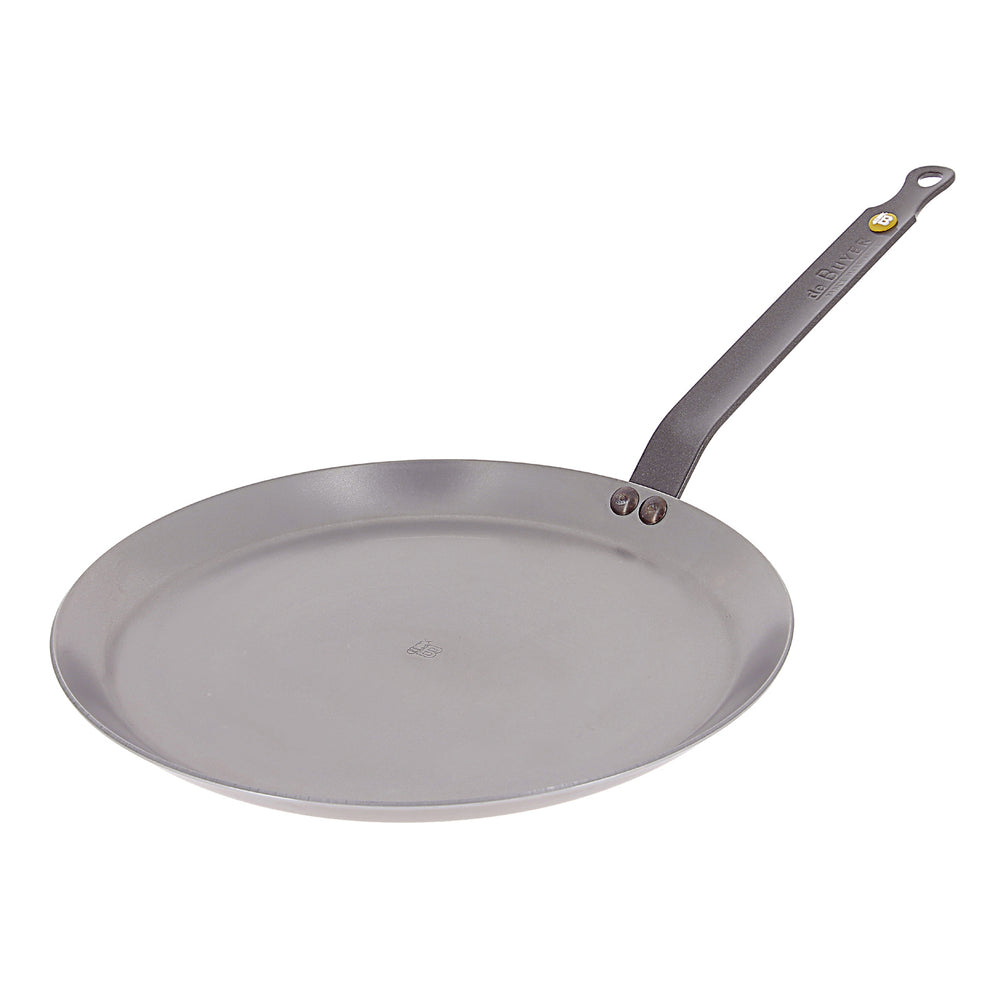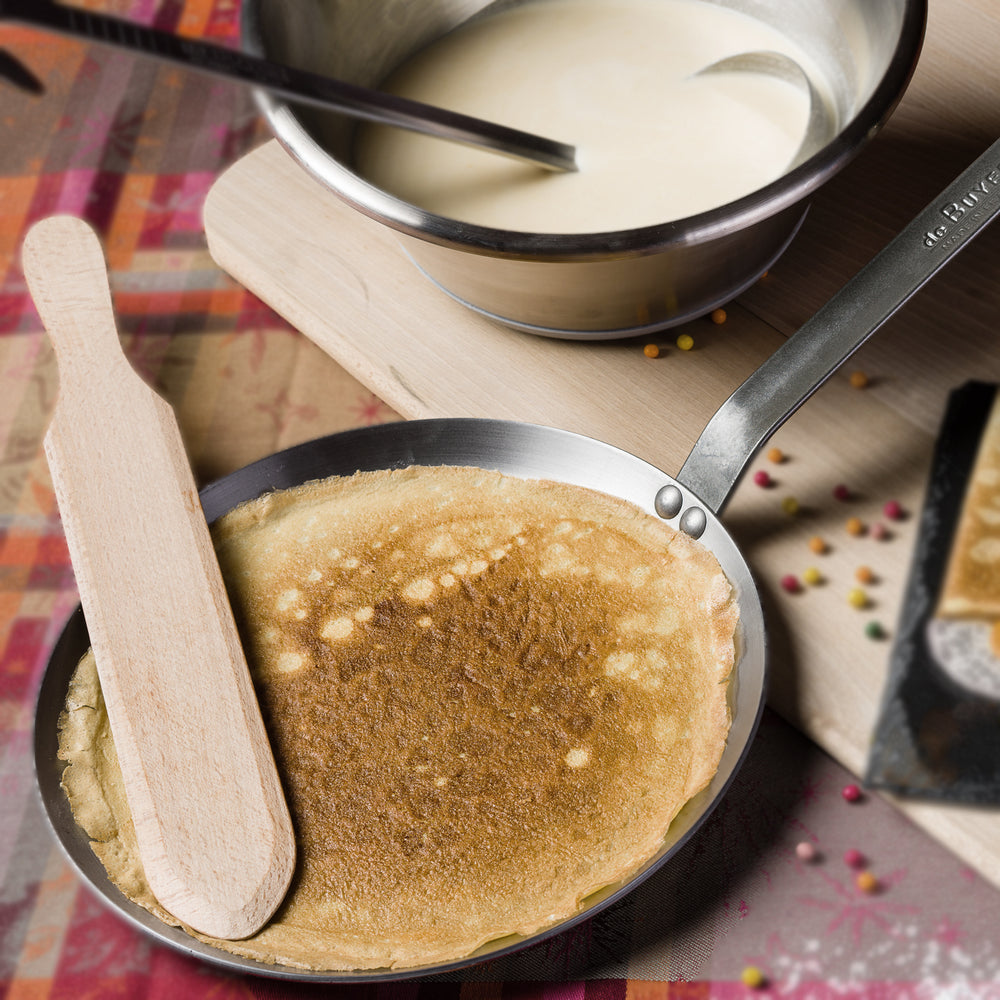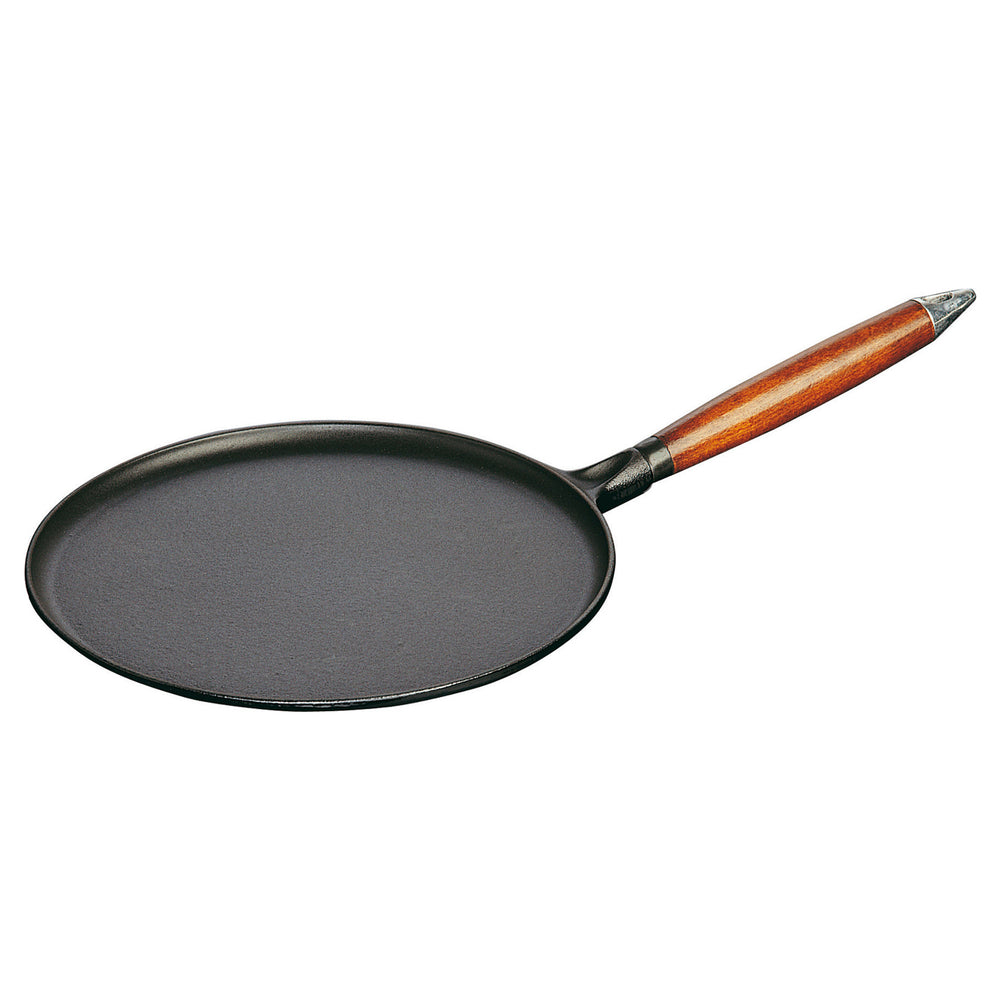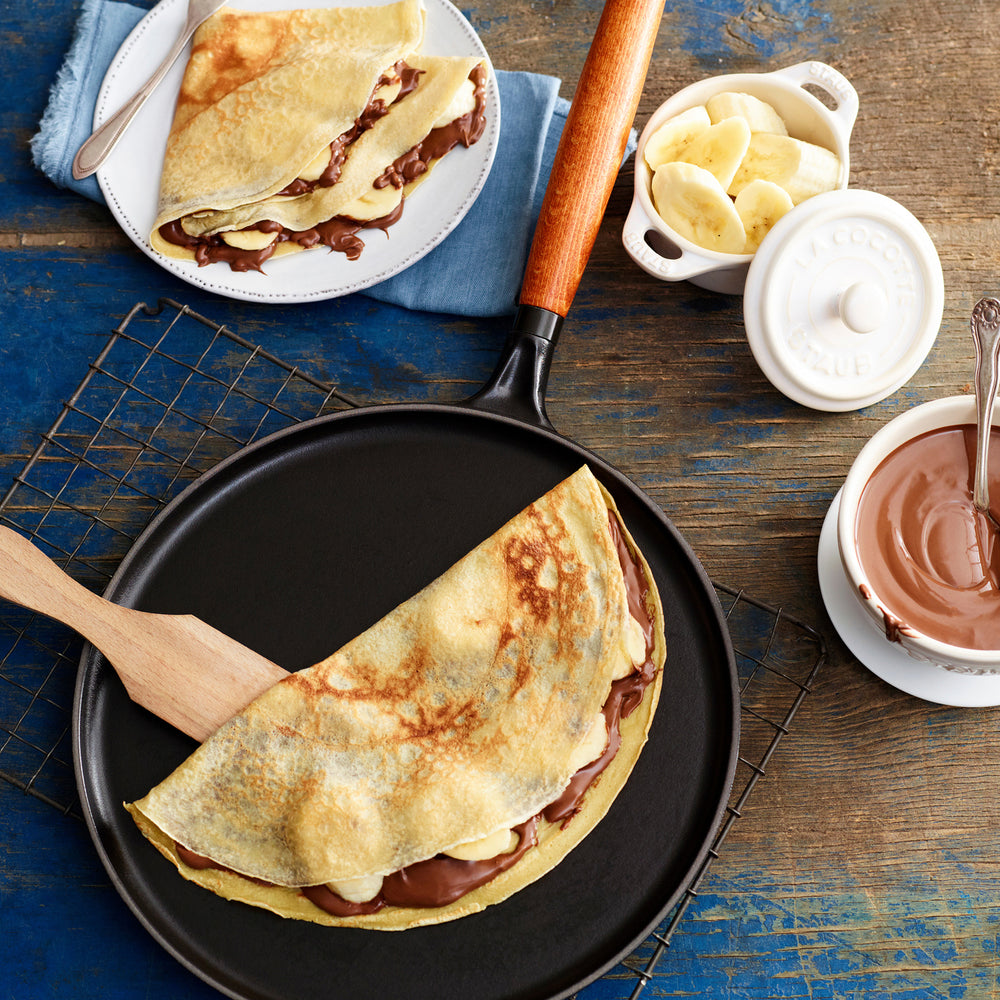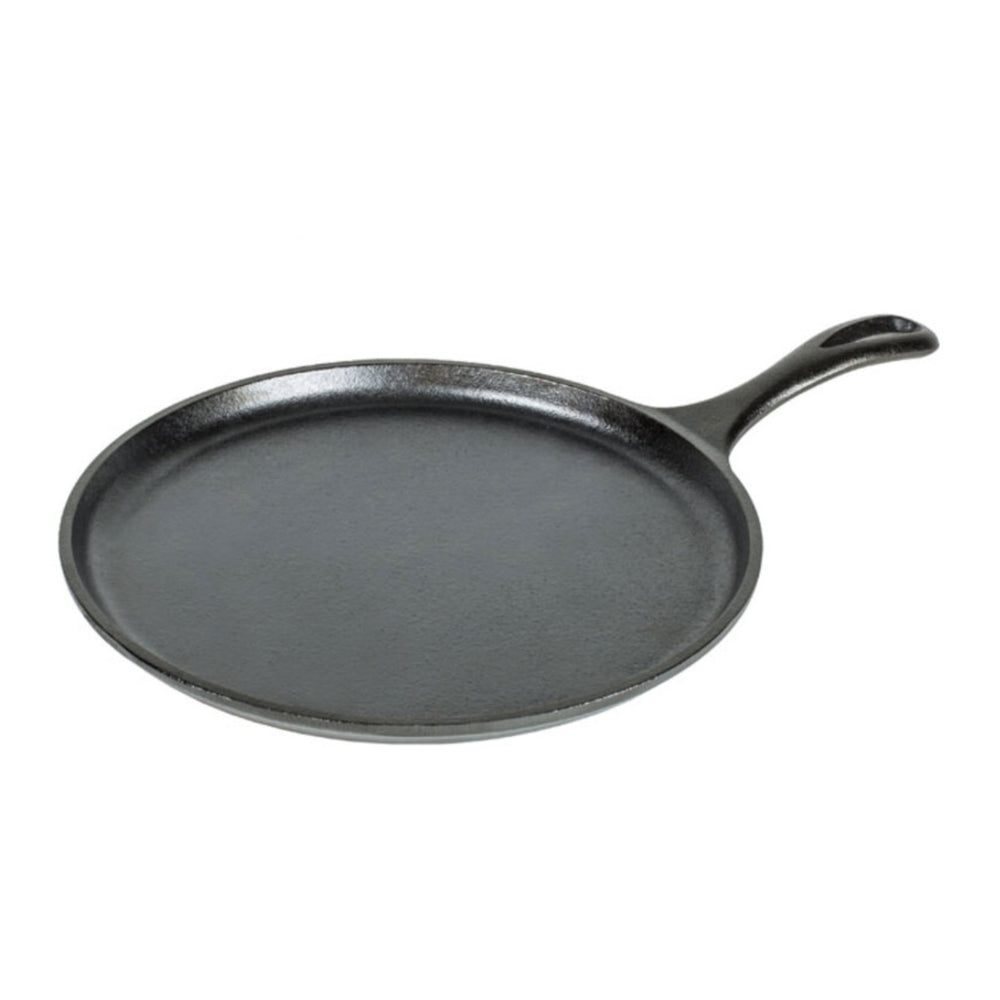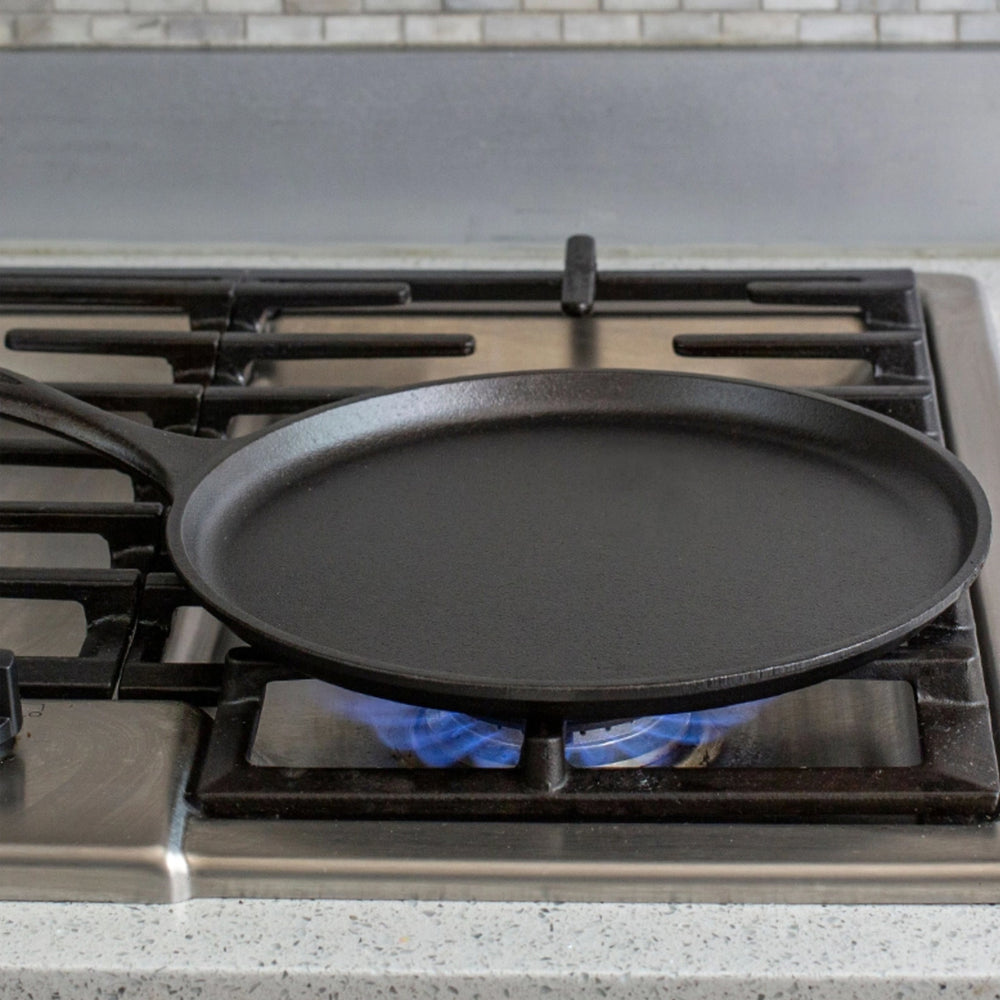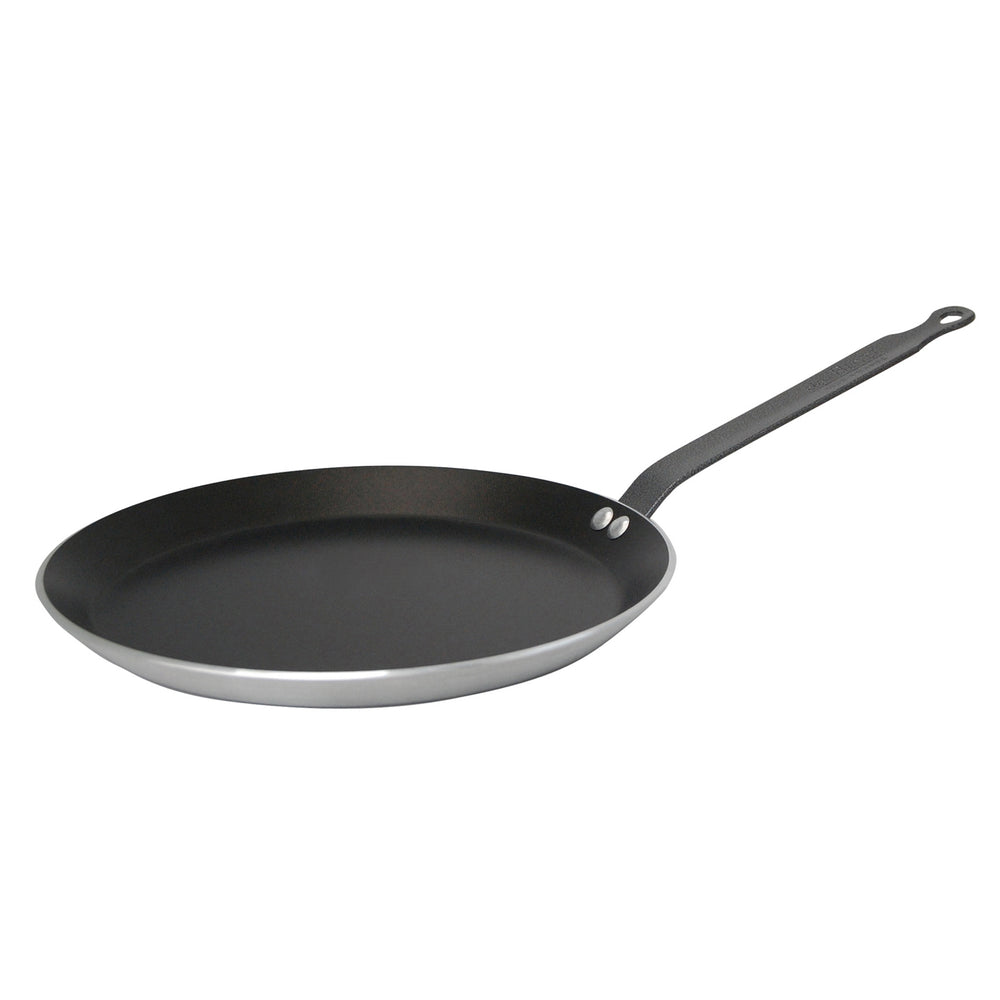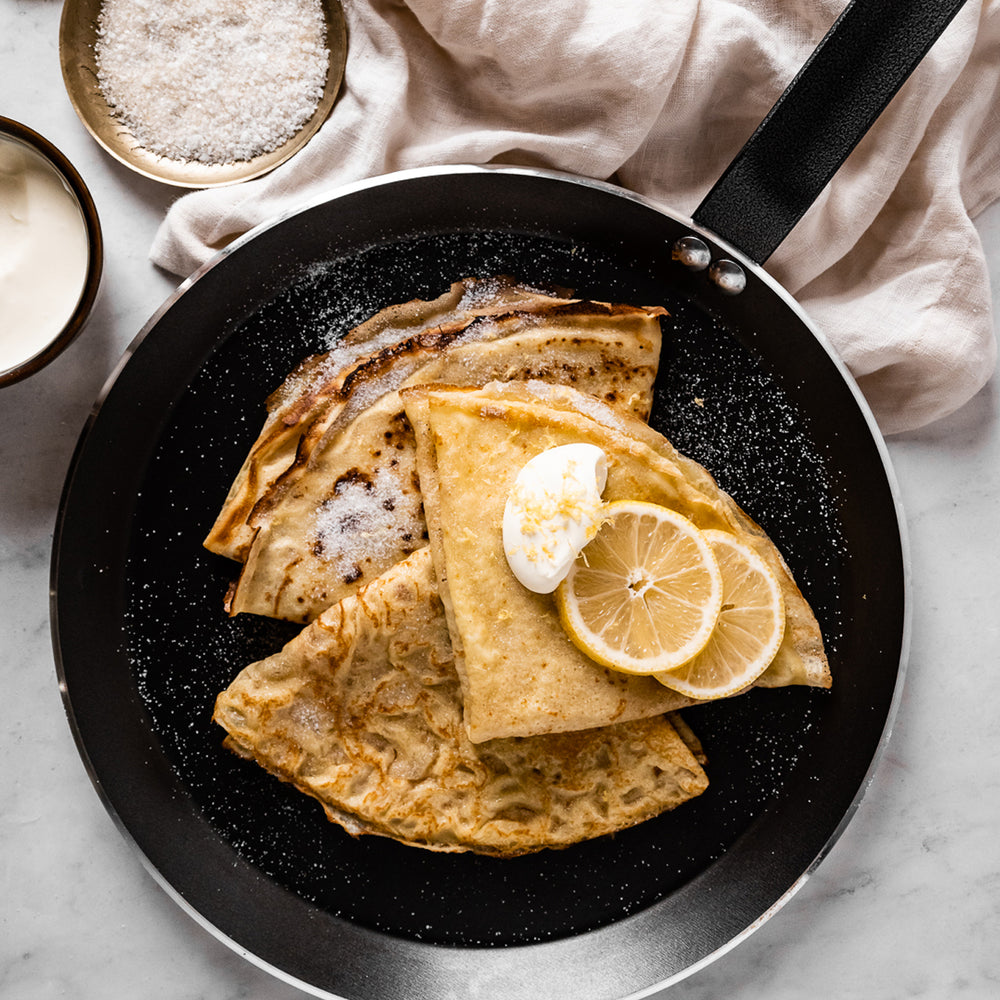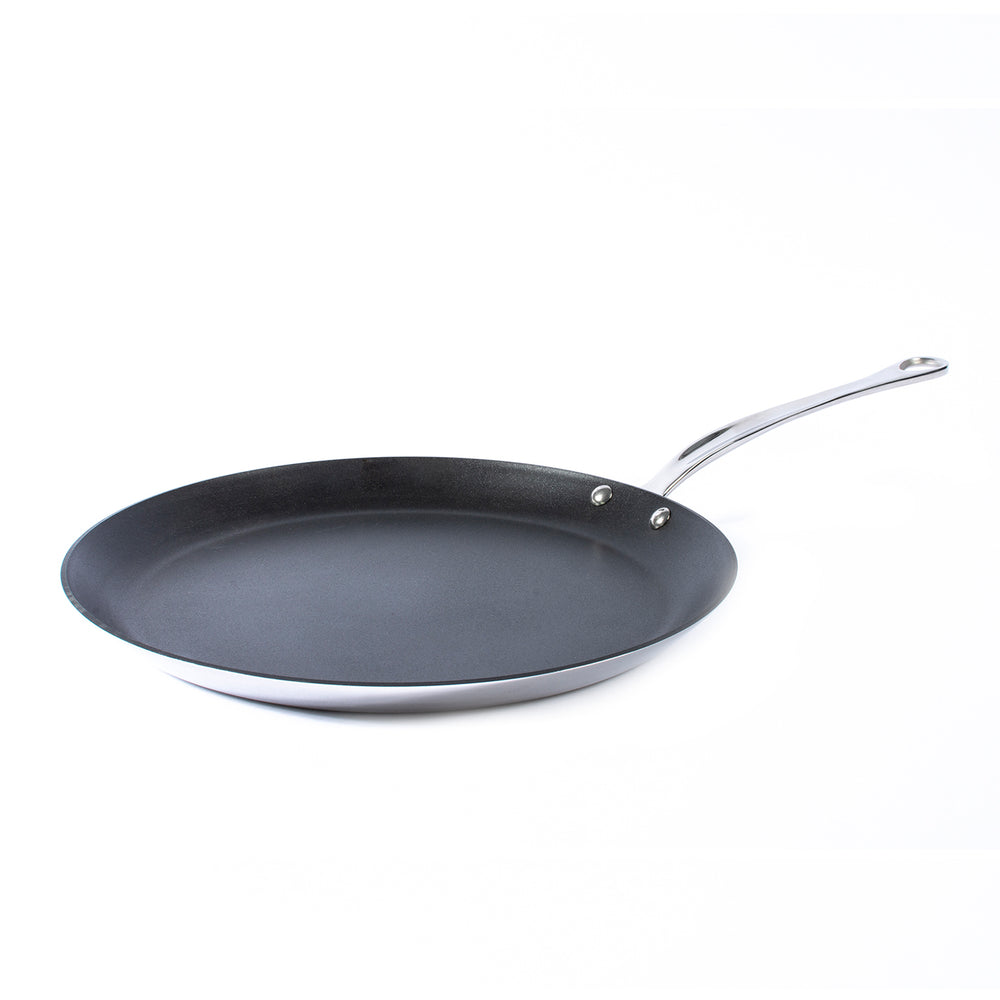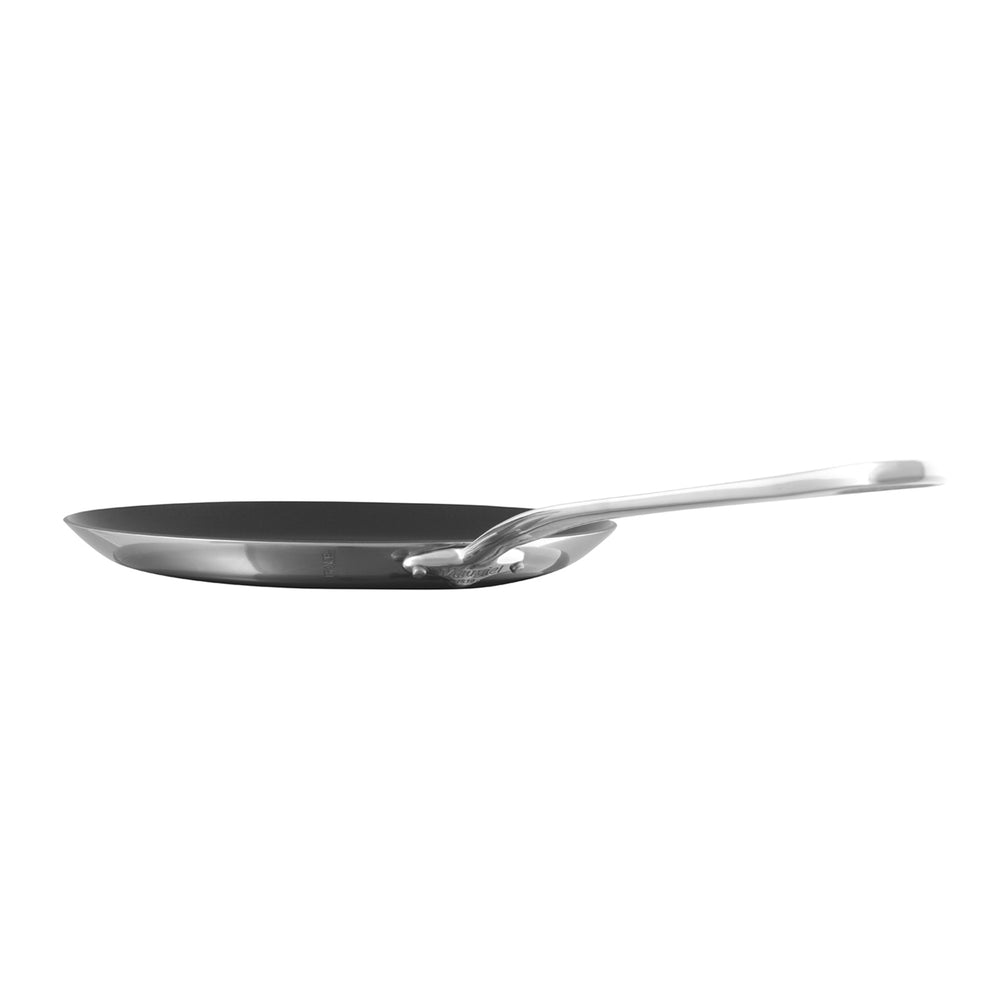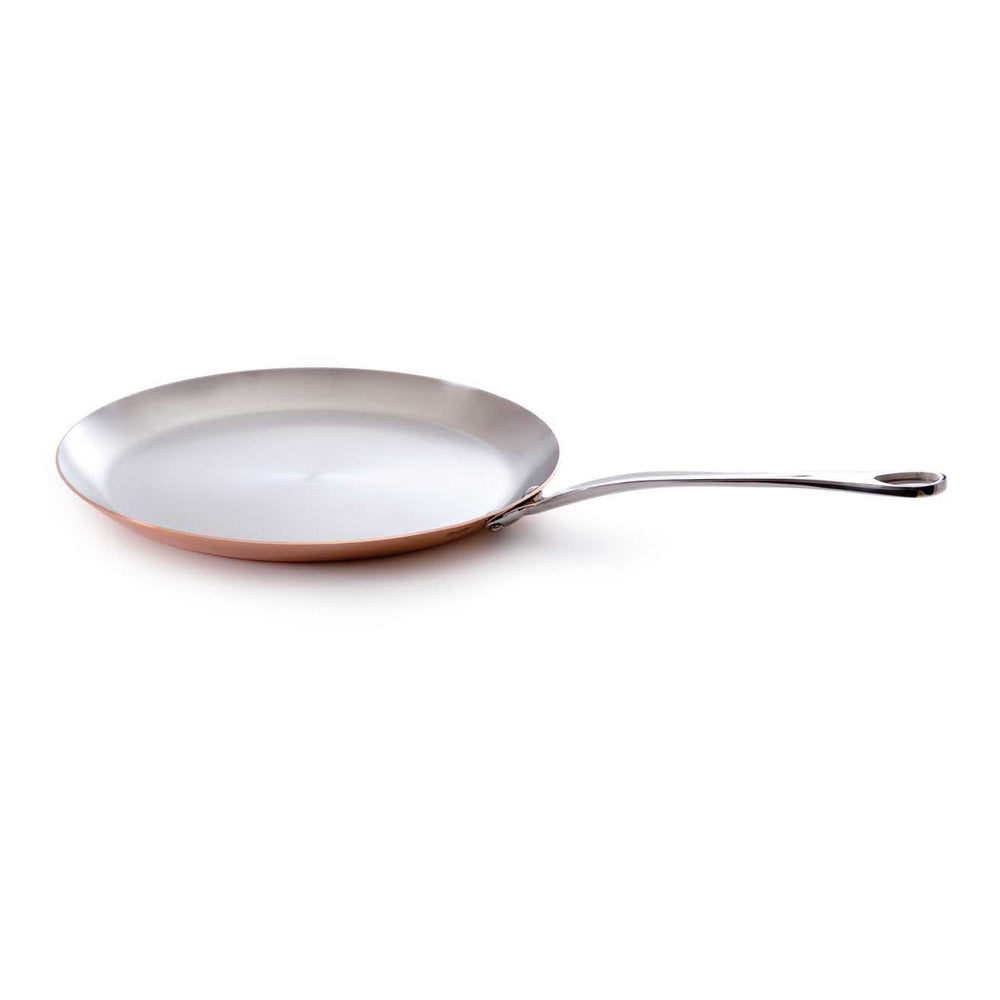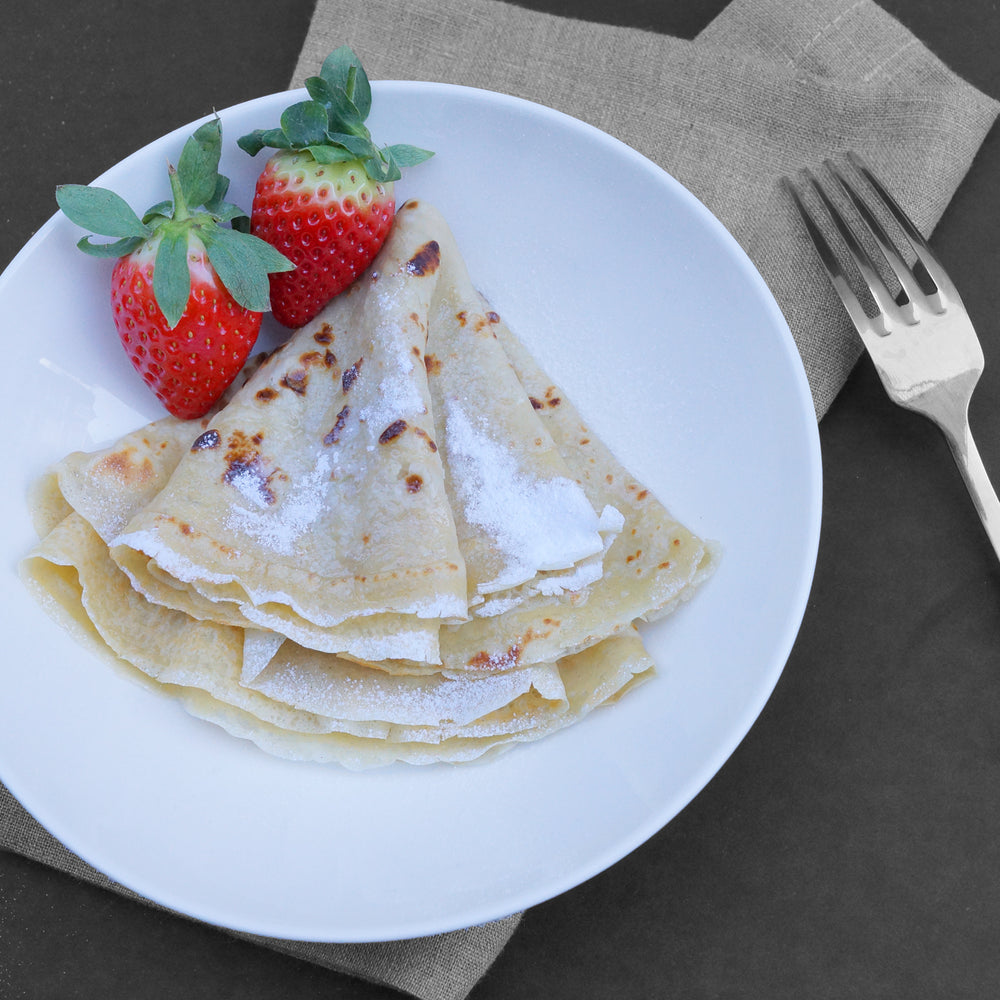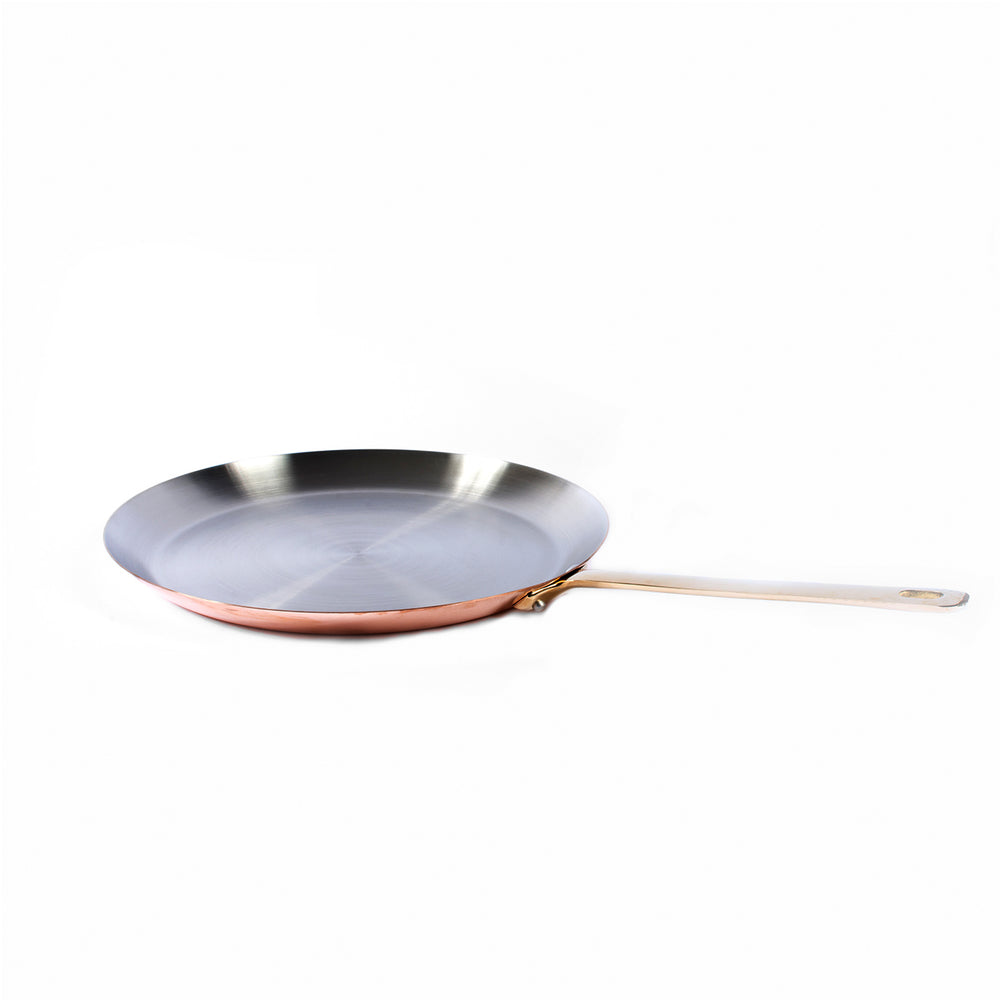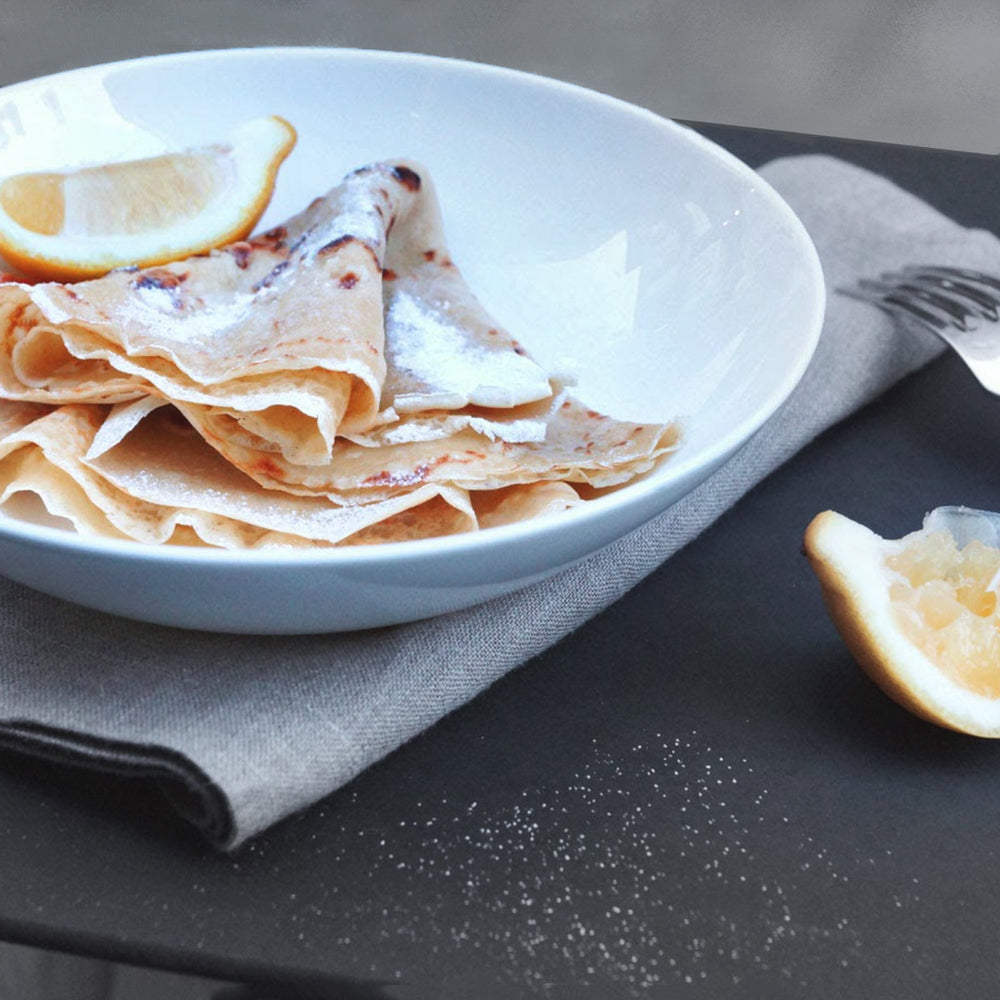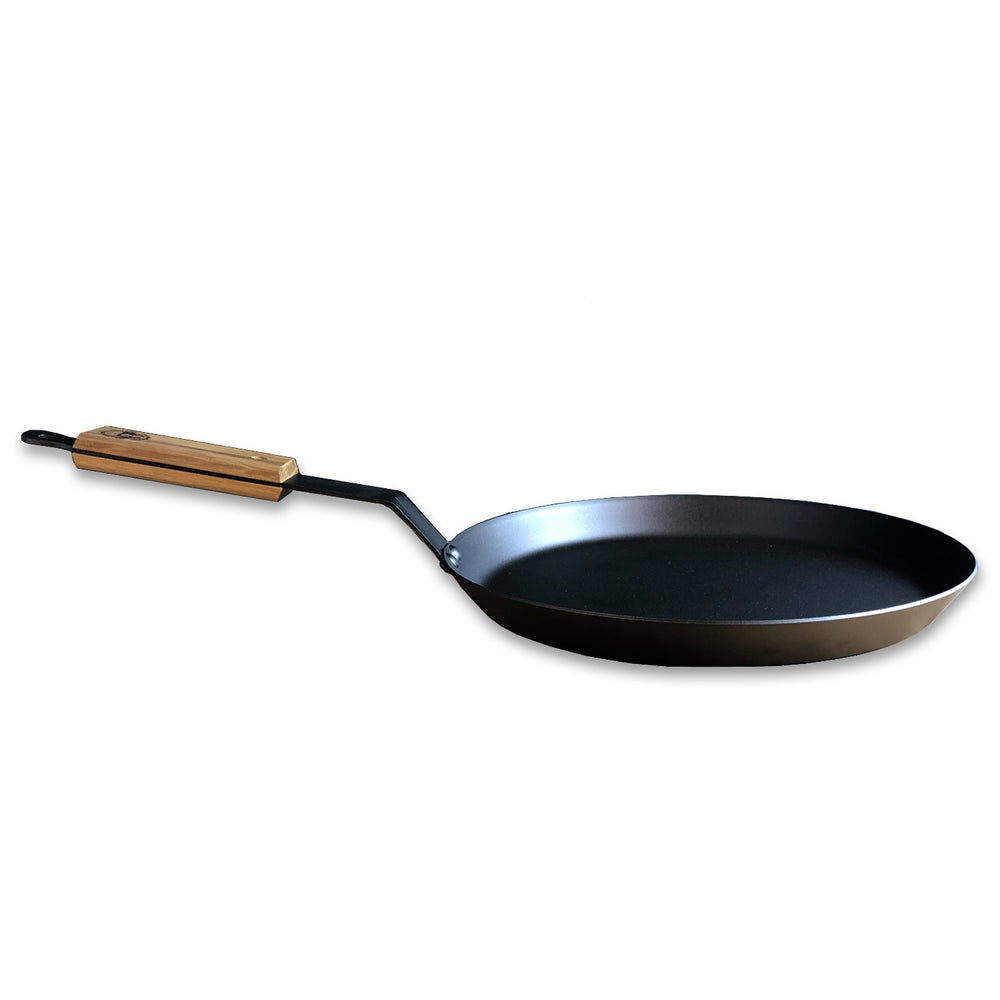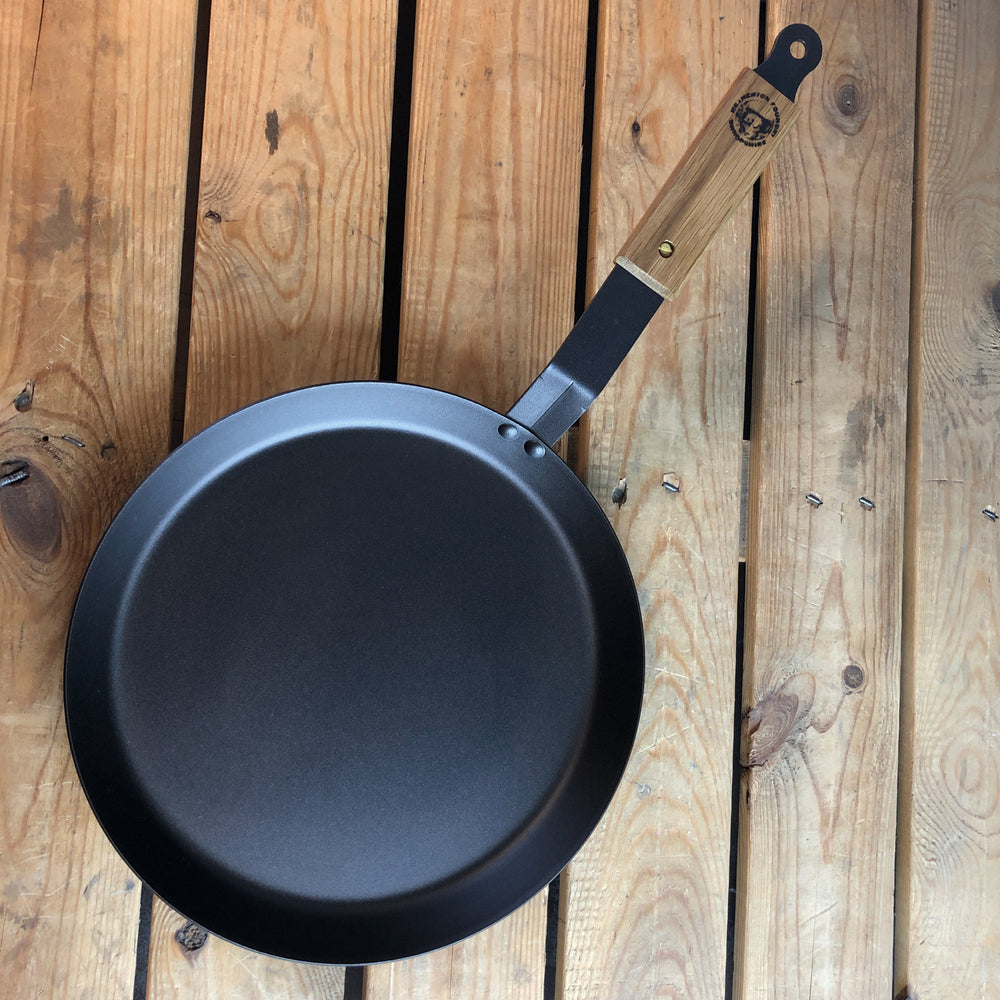If you’re here, it means you’ve already realised that
frying pans simply don’t cut it when making pancakes. In frying pans, pancakes require awkward spatula manoeuvring (with high risk of pancake-breakage), and the steam generated by higher sides means less browning and less space for the batter to spread out. But the larger surface area and short sides of a
crêpe pan eliminate that fuss, and are useful for a lot more than crêpes. Think chapatis, tortillas, injera, and other pancakes and flatbreads from around the world. You could also use it as a makeshift
griddle pan, for searing vegetables, meat and more.
Since pancakes are best cooked at consistent, medium heat,
cast iron – or its siblings, carbon steel and spun iron – crêpe pans, as well as
non-stick crêpe pans, are ideally suited to the task. As for which is the best pan for crêpes, it comes down to personal preference.
Best Durable Crêpe Pans: Cast Iron, Carbon Steel, or Spun Iron
Cast iron pans’ claim to fame is their ability to retain high levels of heat very well, ensuring your food crisps beautifully. Ditto for
carbon steel and
spun iron, which are materially similar. This is especially important for pancakes, as the best pancakes have a golden-brown hue. Best of all, over time, a cast iron, carbon steel or spun iron pan lasts a lifetime, becoming gradually more stick-resistant.
But there’s a catch: They require some
extra care and maintenance than regular pans, as we don't recommend using washing-up liquid to clean them. Just hot water, and for stuck-on bits, salt or bicarbonate of soda.
How quickly your pan becomes easy-release depends on how frequently you use it and how well you take care of it. To kickstart this process, you should
season your pan before first use, even if it comes to you pre-seasoned — read all about how to do that
here. Worry not, it’s easy! Once you do that initial seasoning, your new pan is pancake-ready, but do make sure the bottom of the pan is hot and well-oiled before adding any batter. This will become less necessary over time, but for the first five to ten uses, do not skimp on the oil when using a cast iron, carbon steel or spun iron pan.
To season a pan, like the Lodge crêpe pan pictured above, all you have to do is rub it with a layer of vegetable oil and heat it over a medium-high heat until the oil looks absorbed into the pan; you could also rub the oil all around the pan and place it in the oven, upside down, and bake at 175°C for 1 hour, with a tray below it to catch excess oil.
If you want the heat-retaining quality of cast iron without the extra maintenance, look for an
enamelled cast iron crêpe pan. They won’t become stick-resistant over time, the way a regular cast iron, carbon steel, or spun iron pan would, but like the others, they’ll brown beautifully and last a lifetime.
Best Crêpe Pans for Ease: Non-Stick
Non-stick crêpe pans are super-simple to clean (always by hand), but unlike the pans above, they have limited lifespans of just a few years. You can extend that lifespan for up to a decade with
proper care, but it’s not a lifetime investment. Your pancakes can crisp up well as long as the pan is hot, but make sure not to go above medium heat as that could damage the coating.
For many, including lots of BK team members, the ease of using a non-stick crêpe pan is 1000% worth the limited life span. If you’re not confident about your pancake skills, then a non-stick pan is the way to go, as there is no chance your batter will stick to the pan and make a mess, especially if you try to be theatrical and flip pancakes. And unlike a cast iron crêpe pan, a non-stick crepe pan heats up much faster.
Elite: Copper Crêpe Pans
Copper is the golden child of cookware, with its ability to heat up or cool down almost instantaneously, as well as spread heat evenly across the pan. This is great for most foods, including pancakes, but since copper is a premium material, it comes with a premium price point. However, if you’re familiar with ‘the copper difference’ or you want to invest in a copper pan to witness it yourself, a copper crêpe pan is a good starting point.
Since most copper pans are lined with stainless steel interiors, the
best practices for heating a stainless steel pan must be followed. That is: First heat the empty pan for a minute or two, then add the oil and wait another minute or so for the oil to spread around the pan and heat properly. Then add your ingredients. This ensures your pan forms a heat barrier that lets food slide around the pan. (For more instructions on
how to make a stainless steel pan stick less, click
here.)
Top 8 Crêpe Pans
Staub is a household name in France and around the world for their black enamelled cookware, which has all the benefits of cast iron – namely the ability to absorb and retain intense heat, resulting in gorgeously browned food. But there is no special clean-up required. The enamelled finish on this 28cm crêpe pan prevents the pan from rusting and the slightly textured matt interior makes it more stick-resistant than more commonly seen white enamelled pans. This truly French crêpe pan, which comes with a wooden crêpe spreader and spatula, encourages crisp, lacy edges and rich amber colours, and the wooden handle stays cool so you can flip without fear.
£80.00; shop here.
Pros:
- No seasoning needed
- Stay-cool wooden handle
- Comes with a beech wood crêpe spreader and spatula
- Works on all hobs including induction and AGA
- Made in France
Cons:
- Not oven-compatible
- Won’t build stick-resistance over time
Also called a round griddle, this 26cm crêpe pan boasts a heavy-duty construction made from a single mould, meaning that the handle and pan are not two parts fixed together but one unit. This means remarkable durability, with the potential to last many lifetimes – not too shabby for a pan that costs less than £50.
£45.00; shop here.
Pros:
- Made from one mould (ultra-durable)
- Made in the USA
- Surface becomes stick-resistant over time
- Good value
- Suitable for all hobs including induction and AGA
- Oven-compatible
- Pre-seasoned (so you can get straight to cooking)
Cons:
- Handle gets hot
- Shorter handle makes it more difficult to move around
De Buyer’s Mineral B range is the cookware equivalent of a cult classic film. Beloved by chefs, this French crêpe pan is heavy-duty but easy to manoeuvre, thanks to a long curved handle that stays relatively cool as the pan sears beautifully. It is thinner than a cast iron pan, and more heat-responsive as a result. Unlike Lodge pans, it does not come pre-seasoned, so
it is mandatory to season it prior to use. This extra step has one great advantage: You can see the pan build its layer of seasoning (‘patina’) in real time, as the pan’s surface will change from grey to black as the patina improves over time.
From £36.00; shop here.
Pros:
- Good value
- Made in France
- Surface becomes stick-resistant over time, and you can assess this by the way the colour changes
- Stay-cool handle that’s easy to manoeuvre
- Suitable for all hobs including induction and AGA
Cons:
- Must be seasoned prior to first use
- Oven safe for up to 10 minutes at 200°C; a longer time or higher temperature may cause the handle to discolour.
Less bulky than cast iron, the 26cm Netherton Foundry crêpe pan has the advantage of being more responsive to heat. Unlike the De Buyer Mineral B, it comes pre-seasoned, so you can get straight to cooking (though we still recommend kick-starting the process with these instructions
here). Though this pan is induction-compatible, due to its thinner spun construction, sudden changes in heat – such as going from a low to high heat on induction, or using the boost function) might cause warping. Extra caution should be applied when cooking on induction. (While this is true of
using any pan on an induction hob, it is particularly important for spun iron.) This pan has been made in Shropshire using traditional British ironmongery processes.
£82.00; shop here.
Pros:
- Made in England
- Stay-cool handle
- Pre-seasoned
- Easy to lift and manoeuvre
Cons:
- Not oven-compatible
- Must avoid sudden changes in heat when using induction hobs

Made from extra-thick aluminium, this 26cm non-stick crepe pan from De Buyer has a magnetic stainless steel base that makes it ideal for induction hobs. Five layers of non-stick coating enable you to turn crepes out easily and make the pan simple to clean.
£62.00; shop here.
Pros:
- Extra-thick base ideally suited to induction hobs
- Extremely easy to clean
- Little to no oil needed
- Made in France
- Stay-cool handle
Cons:
- Only oven-safe for limited time (up to 10 minutes and 280°C)
- No metal utensils
- Limited durability (read how to extend the lifespan of a non-stick pan here)

Lightweight yet sturdy and finished with three layers of PFOA-free Eclipse Plus non-stick coating, this beautifully designed pan from Mauviel is oven safe up to 250°C and compatible with all hobs including induction and AGA. It’s an excellent option if you already have other pans in the popular M'Cook range. Since it is exceptionally heat-responsive, a little heat goes a long way.
£139.00; shop here. (This pan is also available with a brass handle
here.)
Pros:
- Suitable for all hobs and the oven
- Extremely easy to clean
- Little to no oil needed
- Made in France
- Stay-cool handle
Cons:
- No metal utensils
- Limited durability

Mauviel has applied their centuries-long experience in forging cookware to carbon steel pans in their excellent M'Steel range. This durable pan, made from heavy-gauge black carbon steel, can be used on all hobs including induction. Though it requires seasoning before use, the benefit of this is that you get a visual cue when the surface has become stick-resistance. (It will go from grey to brown to black.) It has an extra long handle for easy manoeuvring, and can be used in the oven as well.
From £44.00; shop here.
Pros:
- Suitable for all hobs and the oven
- Ultra-durable and gets even better with time
Cons:

When it comes to heat responsiveness, there’s really no match for copper. With this crêpe pan, which has an inner lining of stainless steel, you can expect even browning. It is not non-stick, so be generous with oil or butter and be careful to only flip over the pancake once it is fully cooked on the underside. For stick resistance, follow our guide on
how to make a stainless steel pan stick less.
£329.00; shop here. Also available with a brass handle, here.
Pros:
- Unparalleled heat-responsiveness
- Heritage French copper
- Stay-cool handle
- Lasts a lifetime
Cons
- Does not work on induction hobs










